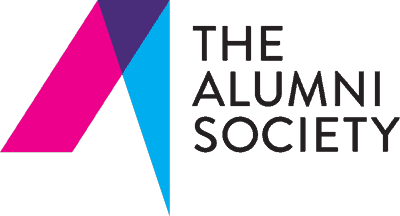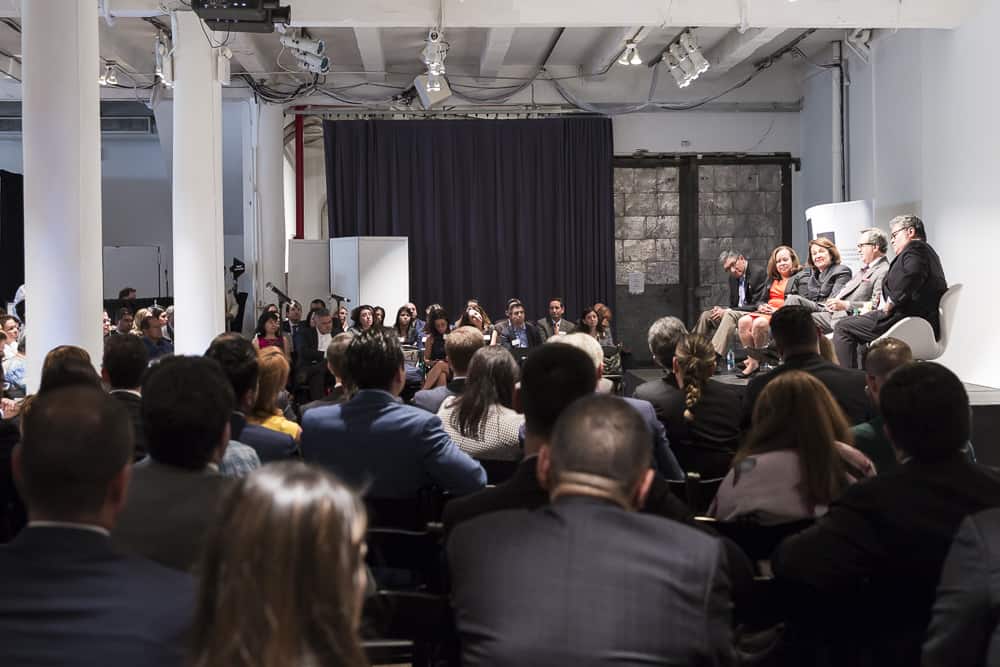Diversity Isn’t Visible
Every person is an amalgam of identities—some obvious, many not. The Alumni Society explores when and how to nurture those roles in the workplace.
Words by Mary Kenney
Leader. Parent. Manager. Strategist. Dreamer.
These titles all describe members of The Alumni Society. They complement and overlap one another, yet some are deemed too “personal” for the workplace, and professionals must choose which of these roles to display while at the office.
On the other hand, the choice to identify with a label isn’t always left to the individual to whom it belongs. Managers and recruiters may value the ability to label someone “diverse” because they value the idea of diversity numbers over the needs and identities of an individual.
Every member of the Society has a varied set of titles, but most of them aren’t visible. It’s easy to catalogue diversity using obvious, visible traits, such as gender, age, and ethnicity. But diversity of thought—the most widespread type of diversity—is invisible.
As members of a network founded on a mission of inclusion, it’s important to reflect on how to recognize and manage many types of diversity, all of which are necessary facets within an individual and workplace identity.
Coaches at the Center for Creative Leadership, an executive education provider, illustrate this dilemma in a fictional letter written from the perspective of a black employee to a white boss: “I was prepared to answer the occasional question about a particular strategy or offer any insights from my experience that might be relevant. Instead, I got a barrage of questions about issues related to diversity. Each story, taken in isolation, may seem trivial. But please understand that I could go on and on. I could give you hundreds of examples—things that happen to me and my black colleagues and friends every single day. It’s the cumulative effect that wears us down.”
The Alumni Society, at first glance, might not seem like a diverse group: every member graduated from a top US university, is a leader in his/her company or organization, and identifies as Latino. But a myriad of perspectives—the invisible type of diversity—exists within this organization. To explore this idea, the Society asked members: which roles define how you see yourself?
“Mother. Networker. Professional. Philanthropist.”

Cornell University
Years before she became Bloomberg’s global manager of external audit, Janet Torres was up for a promotion in the security risk team. It was an operational role that many people applied for, and Torres got it.
“I had a lot of other people upset that I was given the role,” she remembers. “They had no women on this team, and the other men approached me directly and said, ‘I’m not sure why you were given this over these other people or myself.’”
The reasons were obvious to Torres. Though it was true the group wanted to add a woman to the team, that wasn’t the first or most important reason they chose her. The risk group worked internationally but didn’t have anyone who spoke another language. Torres’s fluency in Spanish and Portuguese helped improve relationships with Latin American vendors and reduce reliance on third-party translators. She quickly became a major asset for the team.
Torres says she has endured bias in the workplace mostly due to her gender. For managers and diversity officers, the intersectionality of gender inequality and racial discrimination is often, at best, overlooked, and sometimes marginalized completely. Kimberlé Crenshaw of the UCLA School of Law and Columbia Law School developed the theory of intersectionality in 1989. It posits that individuals who identify with more than one traditional minority group endure stereotypes that others—both majority members and individuals who identify in only one group—do not. Patricia Hill Collins gave the theory a spotlight when she used it to outline black feminism. Rather than treat each role—age, race, gender—separately, the theory posits that these roles are interrelated and shape one another.
When Torres was the only woman on a technical operations team, her company needed one person to travel from New York City to Buenos Aires, Argentina. Every man was asked if he was interested in going, but Torres was never offered the opportunity.
“When they finally approached me, they said, ‘Oh, you can’t travel, right? Because you have a child?’” Torres says. “I said, ‘That’s my personal life. Also, men have families, too. It’s not a disability. Unless I say I need flexibility, it shouldn’t matter.’”
Torres doesn’t ignore her identity in the workplace, but she wants to define how it is expressed and when it applies to her work—not the other way around. She’s been with Bloomberg for eighteen years, and she helped create the Bloomberg Latin Community, one of seven ERGs at the company. But she insists that how her identity relates to and affects her work must be her choice and not based on the assumptions of others.
“Managers who have not worked with diverse people or haven’t been trained on the topic can view diversity as a disability instead of adding to your success,” she says. “CEOs and other leaders often learn and understand diversity and why it’s needed, but middle managers don’t. There needs to be more education about unconscious bias.”
“Businessperson. Legal expert. Parent. Mentor.”

Stanford University
Many of the ways in which we marginalize identity is invisible—not only due to intersectionality and the nuance of diverse thinking, but because our corporate system hinges on a critical skill: networking. For those from diverse backgrounds or who speak English as a second or third language, that isn’t always an easy skill to pick up, let alone master.
When Sergio Garcia, now the senior vice president, general counsel, and secretary of ZELTIQ, started in law, he experienced a common dynamic among young attorneys of color—the challenge of making connections with colleagues. “As a young lawyer at a large, prestigious law firm, I felt isolated as the only Latino attorney at the firm,” he remembers. “Nevertheless, over those first few years, I developed friendships with several members of the nonattorney staff where, of course, I found more people who looked like me or had a similar working-class background.”
His desire to connect with people he related to nearly landed him in trouble with one of the firm’s senior partners. Garcia was conversing in Spanish with a legal secretary when the partner walked by, and he abruptly interrupted their conversation with a reprimand. “Only English is spoken here,” he said.
“I was shocked,” Garcia says. “The firm’s largest office, the one where I practiced law, was in California, and the law firm’s clientele was international—from several countries around the globe, including Latin America.” Garcia’s reaction was not to slink back to his desk; instead, he went to the partner’s office and expressed his surprise and offense at the statement. “I said it should be a positive thing, especially at this international law firm, that we have attorneys and legal staff who can speak two or even more languages,” Garcia says. “Then I recall saying, in the most diplomatic manner I could muster, that I would continue to speak Spanish in the workplace, and that if he had a problem with this, he should take it up with the chair of the firm.”
Garcia suspected he would be fired the next day. Instead, the senior partner invited Garcia to lunch, where he apologized for the reprimand and admitted it was inappropriate. They talked about the firm’s values and creating its first diversity initiatives. Within a week, Garcia was asked to join the hiring committee of the firm. He was eventually admitted as the firm’s first Latino partner and shareholder. “I set out to build a robust pipeline of attorneys of color to make sure that other attorneys would not feel as alienated as I did during the first years out of law school,” he says.
There are multiple layers of success to that story: there is Garcia’s courage in confronting the partner, and there’s the partner’s ability to listen and have a healthy discussion about a topic in which he had little experience or good information. That collaboration led to a new initiative and internal culture for the law firm. An opportunity to learn and an employee willing to have difficult conversations that improve a workplace can and should be valued by managers.
“Who I am doesn’t vary; I don’t see myself as playing roles.”

Dartmouth College
Tomas Arlia doesn’t find the question about his roles an easy one to answer. “The activities that you perform in different settings vary, but how you do it is usually a reflection of who you are,” he says. “Who you are, for me, doesn’t vary. I’m always guided by the same values, regardless of where I am or who I’m with.”
Arlia has been involved with Hispanic interest groups in the past, but he doesn’t feel that his heritage defines his personality or values—which, he says, may be because he’s lived in many countries. What has shaped his perspective, values, and principles is his family.
Arlia was raised in an environment in which every member of his family, no matter how young, was expected to take a stance and defend his/her opinions. He remembers Sunday lunches with his grandmother, who’d worked in politics before women were accepted in that arena.
Between his time with her and friendly debate over dinner with his parents, Arlia became accustomed to being a listener.
That’s who he is both at work and home. “We all need to debate, not have a top-down conversation,” Arlia says. “I want people who work with me to push back so we bring out the best. That’s how people grow.”
Arlia expects that pushback in discussions of diversity, as well. He is strongly against forcing people to define themselves only by their diverse identities. “We should celebrate diversity that comes from diversity of experiences and diversity of thought,” he insists. “But too many times, there’s this automatic labeling—‘oh, because you have a diverse workforce from an ethnic, racial, or gender perspective, that means you have diversity of thought.’ I don’t think that’s right.”
Arlia says organizations that want to call themselves diverse have to find people from different socioeconomic, racial, and gender backgrounds and must, most importantly, emphasize diverse approaches to problem solving. Assumptions based on visible forms of diversity alone will never be enough.
In Diversity Executive magazine, attorney Jill Jacobson writes, “‘Diversity’ traditionally is defined to mean racial, ethnic, and gender diversity. But diversity manifests itself in many other ways. Invisible diversity is the diversity we usually do not see when we meet and interact with others. It can encompass disability, religion, class, age, regionalism, sexual orientation, and other characteristics. Individuals with invisible diversity markers often choose not to disclose them, especially if the markers carry a social stigma.” This article is often cited in research and mission statements.
“A lot of companies just try to drive numbers,” Arlia says. “They’re looking at the wrong metrics. It’s the culture within a firm that allows diversity of thought and action—not the HR numbers.”
“Latina. Family member. Career person.”

Georgetown University
Heritage molded Jackie Morales. The senior corporate counsel at Sony is the daughter of blue-collar immigrant workers with elementary school-level education, so Morales wasn’t exposed to the same educational and networking opportunities that many of her peers had as they
grew up. So she became driven to create opportunities for herself.
“I had to actively look for [opportunities],” she says. “This is different even from third-generation Latinos because their parents are educated, and they have a network of people they can work with.”
While Morales deeply identifies with her culture, this facet of her upbringing highlights a piece of her identity that isn’t captured by the title “Latina.” As the first in her family to be born, raised, and employed in the United States, her experience has been different from many fellow Latinos, and her perspective is diverse in a way that’s often overlooked.
Though she’s encountered obstacles in her career due to the diversity of her experience and heritage, Morales feels she’s in the right place, with the right perspective, at Sony.
“No one’s ever assumed I should know something—or not know something—because I’m Latina,” she adds. “That’s because I work for a good company that doesn’t segregate people based on who they are.”
“Leader. Dreamer. Latina.”

Georgetown University, Harvard University
Betsy Silva could have worn a number of labels that would have stalled or halted her drive into corporate America. “I think of my journey as a leader, and I remember instances in which it wasn’t safe for me to be who I wanted to be or who I knew I was,” she says.
Even today, when asked which identities should be expressed in the workplace, her answer is, “It depends.”
As a young woman, Silva dreamed of one day attending Harvard University, but her life didn’t follow the course she expected. She married when she was seventeen years old and had a daughter at nineteen. At twenty, she was a single mother living in public housing in Puerto Rico. She didn’t see any of that as a reason to give up on her dream, so she and her brother made a deal: he studied engineering at college during the day, she went to night school, and whoever was home took care of Yessie, Silva’s daughter.
Silva finished her bachelor’s and master’s degrees, and today she is the director of diversity, inclusion, and engagement at Boehringer Ingelheim. And she did reach her dream: she was a National Hispana Leadership Institute Fellow at Harvard in 2005.
“You walk under the arch that says ‘Harvard;’ it has their coat of arms there,” she remembers. “Walking through those doors, I went to a corner and cried. I just stared at that coat of arms. I went, ‘Oh my God, I made it.’ I didn’t make it in the traditional way, but it doesn’t matter; I made it.”
Facets of Silva’s identity that have shaped her and, thus, the business leader she is—a single mother, a young mother, and a Latina—also could have easily thrown her plans into disarray. And then, there were times when she was given a label that could have taken over her professional life. At one company, every time a Hispanic person was hired, human resources sent them to talk to Silva. She finally protested, reminding company leaders that not every Latino wants to identify with the community or label.
At another company, one executive always went to her with requests to organize company events, despite her title as chief diversity officer. “I said, ‘Did you ask me to do this because I’m a Latina, and you see me as all about fun? Is it because I’m a woman? You have all these men on your team, and you haven’t asked them to do this.’” She knew she might be fired, but she was prepared for that outcome. It was a difficult conversation in a turbulent time in her life—and it was worth it. “He was very annoyed at the moment, but he never asked me to be his events coordinator again.”
Silva lives by three words in her career: choice, courage, commitment. A combination of all three was required to define her workplace identity, and she’s had more than her share of pushback. It wasn’t easy, she admits, but it made her career—and life—reach the place she dreamed of, and not what anyone else set out for her.
The Alumni Society represents just a fraction of the corporate world, and it displays a vivid pattern of both visible and invisible diversity. Still, members of a diverse organization can be caught up as easily as anyone else in reaching quotas and improving numbers.
Vlatka Hlupic, professor of business management at the University of Westminster, says corporate leaders’ focus on processes, procedures, and results ignores the human dimension of work and productivity. It’s an oversight managers can’t afford in inclusion, which is just as important as diversity.
It’s the responsibility of managers, mentors, and professionals to remember that they wear those three roles at all times, just as it is every professional’s responsibility to remember to celebrate, not impose, identity in the workplace.
While working to emphasize diversity, leaders can’t ignore individuals.




